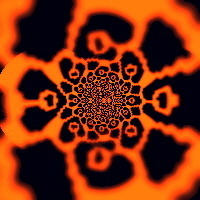게임엔진(GameEngine)
- ( 무버블과 스테이셔너리 라이트) 다이내믹 섀도잉, 섀도 맵 캐시 2021.02.09
- Vector3.Scale : Multiplies two vectors component-wise. 2021.01.13
- Prefab Control, UnpackPrefab completely 2020.12.20
- UE4 full screen resolutions, Tarray<FIntPoint> 2020.12.16
- Resolution change, Full, Window 2020.12.15
- 플러그인 모듈 추가 EditorScriptingUtilities 2020.09.15
- 회전 및 이동 처리에 사용되는 함수들 2020.05.24
- TSubclassOf, TEnableIf, TPointerIsConvertibleFromTo 의 이해 2020.05.21
- Analytic Two-Bone IK(투 본 IK) 2020.05.13
- CCD IK (Cylic Coordinate Descent IK ) : IK 2020.05.06
- FABRIK Algorithm : IK 2020.05.05
- Calling Blueprints in the Editor 2020.04.27
- 모바일 기기의 Tile Based Rendering(타일 기반 렌더링) 2020.02.24
- [InitializeOnLoad] : 에티더 UnityEditor 에디터 스크립트 생성자 호출하기 2019.09.07
- 에디터에서 해당 오브젝트에 대한 prefab path 얻어오기 : Get a prefabs file location in Unity 2019.09.07
- 컴포넌트를 추가 할때 호출 되는 함수 Reset() 2019.09.01
- Coroutine 과 Thread 차이 2019.06.20
- Why does Mathf.Sign(0.0f) return 1? 2019.06.11
- Can Transition To Self 2019.05.24
- Burning Edges Dissolve Shader in Unity 2019.04.25
- [ExecuteInEditMode] 는 실행된 값이 저장되어 있는다 2019.04.13
- 애니메이터 오버라이드 컨트롤러 2019.03.13
- 스테이트와 Transition Interruption Source 2019.02.15
- TextMesh Pro & Unity 2018.1 (Migration to Package Manager releases) 2019.01.25
- Physics.BoxCastAll 충돌 범위와 Point is zero? [BoxCast 분석] 2018.10.13
- unity3D Help Shortcut setting + visual studio 2018.10.13
- 유니티 UI 버튼 PointerDown, Up 스크립트로 받아오기 2018.10.12
- how to make a transparent color with CreatePrimitive 2018.10.08
- How do I make member structs accessible in the editor? 2018.10.08
- Physics.BoxCastAll 2018.10.08
